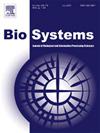代码 Poiesis:生命的燃料。
IF 2
4区 生物学
Q2 BIOLOGY
引用次数: 0
摘要
本文强调了复制和编码的耦合是生命传播的核心,从而导致了代码生成的概念,即宏观进化转变背后的自我生成推进。我的目标是更好地整合身心,并遵循弗洛伊德的理论,通过“梦”这一普遍的无意识现象,找到人类认知的古老起源。Barbieri在生命的起源和思想的起源之间发现了深刻的相似之处,这为揭示这种连续性提供了支持。他的三个宏观进化转变——从有机到神经再到文化——被研究,在每个转变中识别复制和编码的重复,同时通过弗洛伊德的梦理论在神经层面上贡献了一篇独特的精神分析文章,通过该理论解释了从大脑到思想的飞跃。最后,讨论了已经在进行中的第四个进化阶段:算法计算时代的思维外化。本文章由计算机程序翻译,如有差异,请以英文原文为准。
Code poiesis: Life's fuel
This paper highlights the coupling of copying and coding as central to the promulgation of life, leading to the concept of code-poiesis as the self-generating propulsion behind macro-evolutionary shifts. My goal is to better integrate body with mind and, following Freud, to find the archaic origins of human cognition through the universal unconscious phenomenon of the ‘dream.’ Uncovering this continuity is buttressed by the deep parallels Barbieri finds between the origins of life and the origins of mind. His three macroevolutionary transitions –from organic to neural to cultural – are examined identifying the reiteration of copy-and-code at each shift while contributing a singular psychoanalytic piece at the neural level via Freudian dream theory through which the leap from brain to mind is explained. The main underlying question is; if the two key Barbierian mechanisms, copy and code; 1) begin the promulgation of life, and; 2) propel semiotic progressions in micro-developmental steps into macro-evolutionary stages, then we ought to be able to find them reiterated in different ways, isomorphically, at ever higher, more complex levels of organization of the human nervous system. Here I demonstrate how, and in what ways, this is so. Finally, a fourth evolutionary stage already in progress is discussed: the externalization of mind in the computational age of the algorithm.
求助全文
通过发布文献求助,成功后即可免费获取论文全文。
去求助
来源期刊

Biosystems
生物-生物学
CiteScore
3.70
自引率
18.80%
发文量
129
审稿时长
34 days
期刊介绍:
BioSystems encourages experimental, computational, and theoretical articles that link biology, evolutionary thinking, and the information processing sciences. The link areas form a circle that encompasses the fundamental nature of biological information processing, computational modeling of complex biological systems, evolutionary models of computation, the application of biological principles to the design of novel computing systems, and the use of biomolecular materials to synthesize artificial systems that capture essential principles of natural biological information processing.
 求助内容:
求助内容: 应助结果提醒方式:
应助结果提醒方式:


